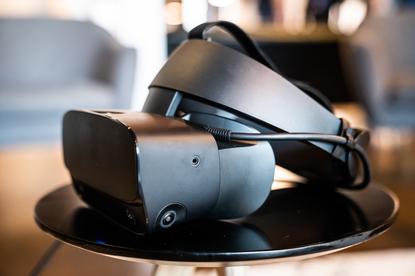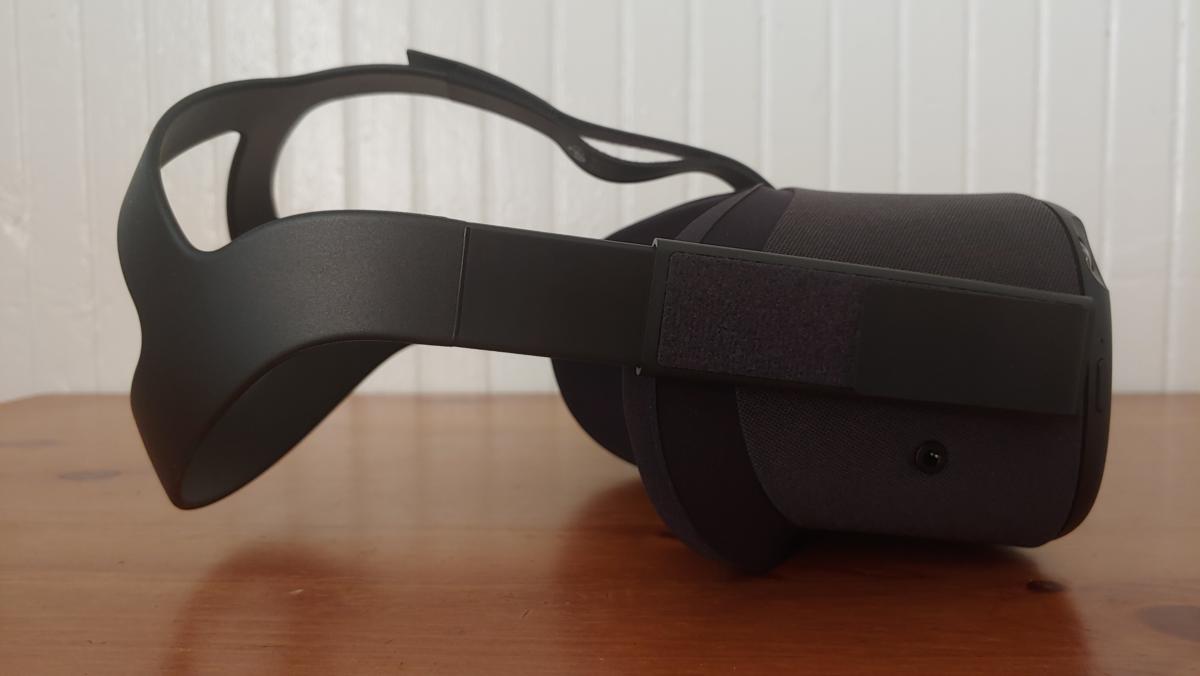Will virtual reality finally break out in 2020?
- 20 January, 2020 22:31

Maybe this will be the year virtual reality goes mainstream. If we say it enough times we’ll be right eventually, yeah?
But it really does feel like 2020 might be the year. Four years into consumer virtual reality, I finally feel excited again. The hardware is great, and cheaper than ever before. The games are promising, albeit few. And there’s a sense that maybe the “We need software to sell hardware to make developing software worthwhile” vicious cycle has finally been overcome. Maybe.
I could be wrong. I certainly hate to get excited about virtual reality’s prospects in 2020, in a “Fool me twice” sort-of way. I’ve had my heart broken by VR before. And yet…
Quest for glory
If VR does take off in 2020, much of the credit needs to go to Oculus and its Oculus Quest. And listen, I love the fidelity of Valve’s high-end Index headset driven by my desktop PC and its Nvidia GeForce RTX 2080 Ti. Who wouldn’t? The image quality is fantastic, the tracking is pinpoint precise, the sound is phenomenal.
The Quest is none of these things. It looks okay. The tracking is easily broken. The sound is good enough.
 IDG / Hayden Dingman
IDG / Hayden DingmanIt doesn’t matter, because Oculus broke free from the tyranny of the tether. Suddenly VR isn’t a $1,500 investment but a $400 one, period (at least when stock is available). No hidden costs, no “Oh actually you need to upgrade your graphics card.”
Even if you have a gaming PC, Oculus Quest’s flexibility is mighty appealing. I have plenty of space to use the Index with my desktop, but still find myself reaching for the Quest simply because it’s less hassle. Friends of mine have expressed an interest in Oculus Quest because their PC is confined to a small room, but they have a sizable living room that would be perfect for room-scale VR. Not to mention the fact that you can travel with Quest, or take it to a friend’s house to demo.
And for an extra $80, you can have a perfectly capable PC-based VR system anyway. Oculus Link, which went into beta in November, allows you to hook the Oculus Quest up to your PC with a USB-C cable. There are cheaper cables on Amazon for $20 or so, but Oculus now sells a bespoke cable for $80 that’s both longer and lays flat along the side of the headset, which is a little less janky than having some random Anker cable sticking out the side at a right angle.
 IDG / Hayden Dingman
IDG / Hayden DingmanIt’s the headset that VR needed. There’s a place for Index, and its cousin the HTC Vive Pro. Hell, there’s still a place for the original Vive hardware as well. Oculus Quest is a great untethered headset though and a “good enough” entry-level tethered headset, and it’s cheap as hell. No surprise people are buying it in droves.
Sell out with me
And people are buying it. That’s, I think, the second part of this story. It’s hard to get reliable sales figures, as neither Valve nor Facebook appears interested in making those numbers public.
There was a lot of encouraging news last year though. First, Mark Zuckerberg claimed during a mid-year earnings call that “We’re selling [Oculus Quest units] as fast as we can make them.”
Soon, even that wasn’t enough. The holidays were full of reports of Quest shortages...pretty much everywhere. In fact Quest is still sold out on Amazon at time of writing, or at least only available through resellers for an inflated price. Placing the order through Oculus’s site, I’m told it will ship by March 4.
 Valve
ValveValve’s Index is hard to get, too. The first reports of Index shortages came in late November, and by early December it was gone. Valve kept orders open for a few more weeks, with shipping estimates slipping first to February, then to March. And now? Going to the Index’s Steam page, you’re met with a “Notify Me” button. Valve’s effectively closed orders until it can meet the existing demand.
Even the much-maligned Oculus Rift S headset is sold out for the moment. That’d be my last pick for VR now that Quest does everything the Rift S does and more, but Oculus is still struggling to keep up.
Again, it’s hard to pin actual numbers to any of these headsets. For all we know, Valve made a dozen Index kits for the holidays, sold out, and is now trying to build a dozen more. Until we see sales figures, it’s hard to know otherwise.
And as a percentage of the PC audience? The numbers remain a rounding error. Looking at the Steam Hardware Survey, all the Vive and Rift and Index owners combined still make up less than 1 percent of Steam users. Hell, throw in the Windows Mixed Reality owners as well, you still only get 0.87 percent of the Steam audience owning a VR headset—or about 800,000 people, doing some back-of-napkin math.
 Valve
ValveSure, that doesn’t account for Oculus Quest owners, nor for those who own a headset but don’t keep it regularly hooked up. Still, VR’s a long way from mainstream.
There’s interest in the platform though—and growing interest, if the current shortages are anything to go by. People want VR, or at least enough people to outpace whatever Valve and Oculus planned for ahead of time.
Half-Life, and more
While Oculus deserves most of the credit on the hardware side of virtual reality, it’s safe to say Valve deserves most of the credit on the software side.
It feels almost unfair to write that, because Oculus has put a lot more money into VR’s software ecosystem since 2016, funded a lot of studios both internal and external, and put out a lot of good-to-great games. Lone Echo, Wilson’s Heart, Stormland, Asgard’s Wrath—Oculus has had a hand in a staggering percentage of the VR games worth mentioning since the Rift’s consumer launch.
And they’ll continue to do so in 2020. In September we finally got a look at Respawn’s long-awaited partnership with Oculus, and it’s Medal of Honor: Above and Beyond. That’s a huge series to see resurrected on VR, whether or not I came away impressed by our initial demo. Ready at Dawn’s Lone Echo II is planned for 2020 as well, and given the original is one of Oculus’s (and VR’s) strongest titles, I’m hoping the sequel can set the bar even higher.
If there’s a forthcoming game fueling a rush on VR headsets though, it’s undoubtedly Half-Life: Alyx. Announced in November and set for a March release, it’s the first Half-Life in over a decade—and it’s a VR exclusive.
Note that it’s not an Index exclusive. Sure, Index owners get the game for free and the Index controllers will have some additional functionality, but Valve’s been very clear that you can play Half-Life: Alyx on a Rift, Rift S, Quest, Vive, HP Reverb, or whatever the hell you have lying around.
This is Valve’s big first-party VR push though. And it’s the closest we’ve got to a system seller. I don’t think that’s a controversial statement—and I say that as someone who absolutely loves Google Earth VR and Tilt Brush, Job Simulator and Vacation Simulator, Lone Echo, Asgard’s Wrath, Audioshield and Pistol Whip and Beat Saber, Robo Recall, Moss, and too many more to mention.
Point being, I’ve played a lot of VR games over the years, and had favorites come and go. I keep a mental shortlist of games for new owners to buy, games that are great to show off to first-timers, and so forth. I imagine every VR headset owner has a similar list.
But none—no matter the quality—have done so much with so little as Half-Life: Alyx. With one trailer, Valve upended the entire idea of what a “major” VR title might mean. I don’t know if it will be good, or even interesting. Nor do I know whether it will outsell Beat Saber, the success of which made arcade/session-style games de rigueur for the last year or two, at the expense of more ambitious (and risky) narrative-heavy experiences.
Still, there’s a feeling I think that in Half-Life: Alyx, virtual reality finally has its showcase experience. This is Valve’s chance, and by extension everyone’s chance, to prove the platform’s usefulness. That’s a lot of weight to put on one game, but it’s almost certainly what’s fueling recent sales, and if in the future VR is as common as WASD controls and physics engines, I expect March of 2020 will be seen as a major inflection point.
Bottom line
Or maybe Half-Life: Alyx will come and go and VR will continue on as it has, slow and steady. There’s that possibility as well. I remember the heady days before the consumer launch of virtual reality, following each new development and thinking “Wow, VR is going to change everything.” Four years later, it hasn’t. Not even close.
Maybe VR’s moment is 2020. Maybe it’s 2021. Maybe it’s 2031. If nothing else, I’m confident VR isn’t disappearing anytime soon, even if “Slow but constant growth” isn’t nearly as compelling a story as “One day, everything changed.”





